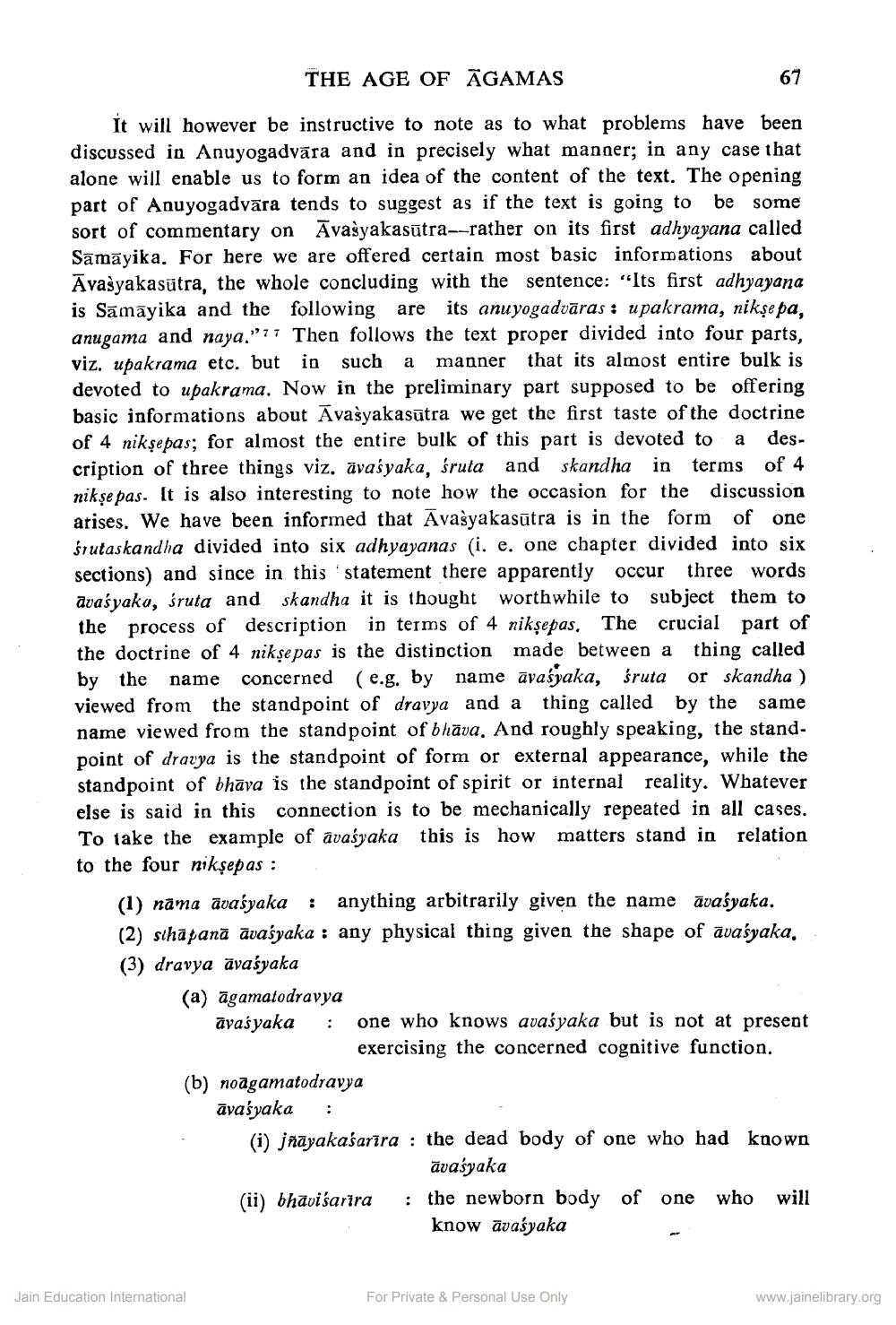________________
THE AGE OF ĀGAMAS
67
It will however be instructive to note as to what problems have been discussed in Anuyogadvāra and in precisely what manner; in any case that alone will enable us to form an idea of the content of the text. The opening part of Anuyogadvāra tends to suggest as if the text is going to be some sort of commentary on Āvašyakasūtra--rather on its first adhyayana called Samāyika. For here we are offered certain most basic informations about Āvasyakasutra, the whole concluding with the sentence: "Its first adhyayana is Sāmāyika and the following are its anuyogadvāras : upakrama, niksepa, anugama and naya."17 Then follows the text proper divided into four parts, viz. upakrama etc. but in such a manner that its almost entire bulk is devoted to upakrama. Now in the preliminary part supposed to be offering basic informations about Avašyakasūtra we get the first taste of the doctrine of 4 niksepas; for almost the entire bulk of this part is devoted to a description of three things viz, avaśyaka, śruta and skandha in terms of 4 nikşe pas. It is also interesting to note how the occasion for the discussion arises. We have been informed that Avašyakasūtra is in the form of one śrutaskandha divided into six adhyayanas (i. e. one chapter divided into six sections) and since in this statement there apparently occur three words avasyaka, śruta and skandha it is thought worthwhile to subject them to the process of description in terms of 4 nikșepas, The crucial part of the doctrine of 4 niksepas is the distinction made between a thing called by the name concerned (e.g. by name āvasyaka, śruta or skandha ) viewed from the standpoint of dravya and a thing called by the same name viewed from the standpoint of bhāva. And roughly speaking, the standpoint of drarya is the standpoint of form or external appearance, while the standpoint of bhāva is the standpoint of spirit or internal reality. Whatever else is said in this connection is to be mechanically repeated in all cases. To take the example of avasyaka this is how matters stand in relation to the four nikṣepas :
(1) nāma avaśyaka : anything arbitrarily given the name āvaśyaka. (2) sthapanā āvašyaka : any physical thing given the shape of āvaśyaka, (3) dravya āvaśyaka
(a) āgamatodravya āvasyaka : one who knows avašyaka but is not at present
exercising the concerned cognitive function. (b) noāgamatodravya āvasyaka : (i) jñāyakaśarīra : the dead body of one who had known
āvašyaka (ii) bhāvisarira : the newborn body of one who will
know avasyaka
Jain Education International
For Private & Personal Use Only
www.jainelibrary.org




